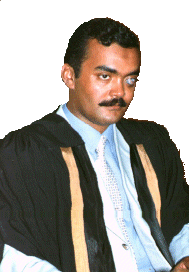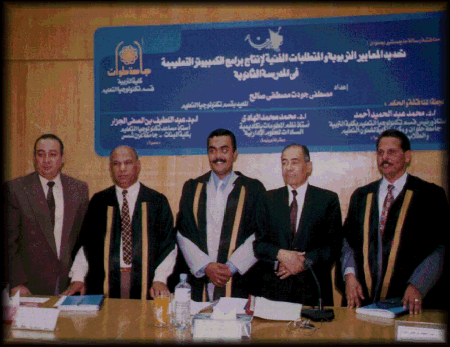
Abstract
|
|
|

![]()
|
Summary of the Research From the middle of 1980’s Computers have been playing a crucial role in education all over the world. This trend has assisted in making educational reform more effective . Computer technology has been highlighted in Egyptian educational development. Several endeavors have been launched by the Ministry of Education around this theme, such as the National Computer Educational Project in 1987 and the President Moubark Project of Educational Development. In the meantime, different agencies within the Egyptian Ministry of Education are being involved directly with the development of courseware. Among them are the Center for Educational Research and Development, the National Center for Curriculum Development , and the General Development of Instructional Media. Also, the Ministry of Education has established the Technological Development Center to: enhance the awareness of information technology among teachers and students, develop the educational multimedia courseware for the curricula which are being taught at different levels of Egyptian education, and link schools with the Internet and establishing electronic libraries for the Egyptian secondary schools. Beside this interest of the Ministry of Education, the private software development companies have increased their involvement in developing courseware for the Egyptian curricula. All these centers and companies are working without guiding criteria for the educational software development. The lack of these guiding standards and criteria, specially for the production of educational software is considered the underlying problem for this research project which is geared to answer the following main question : What are the educational criteria and technical requirements required for the production of educational computer programs in Egyptian secondary schools ? The main objective of the study is to specify educational criteria and technical requirements to assist educational software developers and evaluators in their efforts to design and produce courseware for the secondary schools in Egypt. Therefor, This research aims towards sitting up educational and technical quality standards in conformance with ISO 9000 for software developer and the other international quality criteria. The research methodologies followed in conducting this research project are centered around a field survey to identify the existing situation of the development of educational software in Egypt. This is done through questionnaires, observation and literature search. A developed list of educational criteria and technical requirements for the production of educational computer software of the secondary education in Egypt was suggested and evaluated by the Egyptian educators and experts. And a usability measurement tool was developed and evaluated too. The current research consists of eight chapters, the first chapter demonstrates the introduction and general theme of the research. Also it introduces the main problem, objectives, and methodology of the research. The second chapter presents the Egyptian pedagogical environment and its educational criteria. The contents of this chapter are divided in two parts, the first part specifies the specifications of the Egyptian secondary education and the factors affecting it. Also it demonstrates the technological development projects which are underway. Many agencies are presented in this chapter such as : the National Center for Educational Research and Development, the Technological Development Center and the National Center for Curricula Development. All of these agencies are involved with Educational Development Projects. The second part of this chapter discusses the Egyptian educational process as an integrated system consisting of the teacher, the student and the curriculum. The third chapter presents the current situation of the Egyptian courseware production. This chapter consists of two parts: the first part demonstrates the usage of courseware in Egyptian secondary schools, and the efforts of producing courseware in these schools, the second part presents the case of producing the Educational Courseware in Egypt. Both governmental and private efforts involved in the production of educational courseware are discussed; also this part presents the lake of educational criteria in courseware production and the incompatibility between these efforts. The fourth chapter demonstrates the nature and requirements of educational computer courseware environment for secondary education, it discusses the specifications of educational software and the various kinds of these programs. It also discusses the differences between some concepts such as the multimedia and hypermedia. The fifth chapter presents the educational criteria for the courseware production through discussing the principles of pedagogical design. Also it presents two suggested models for courseware production: the first model is constructed for individual and small group production, and the second model is geared for mass production involvement with large team work. This chapter discusses also the principles of interactivity design, and courseware pedagogical evaluation methods. The sixth chapter presents the technical requirements for courseware production, such as : technical skills, hardware resources and software. This chapter discusses also the principles of designing multimedia user interface, and criteria of courseware quality assurance to confirm with the total quality management (TQM). The seventh chapter discusses evaluation of the suggested criteria stemmed from the previous chapters. It indicates also how they can be used in courseware production. This chapter demonstrates the results of evaluating these criteria, and suggests an evaluation tools measuring the usability of the courseware through testing utilizing some criteria such as user interface, interactivity, content organization, and hyper presentation. The eighth chapter presents twelve results of the research and three recommendations which support the theme of the research. |